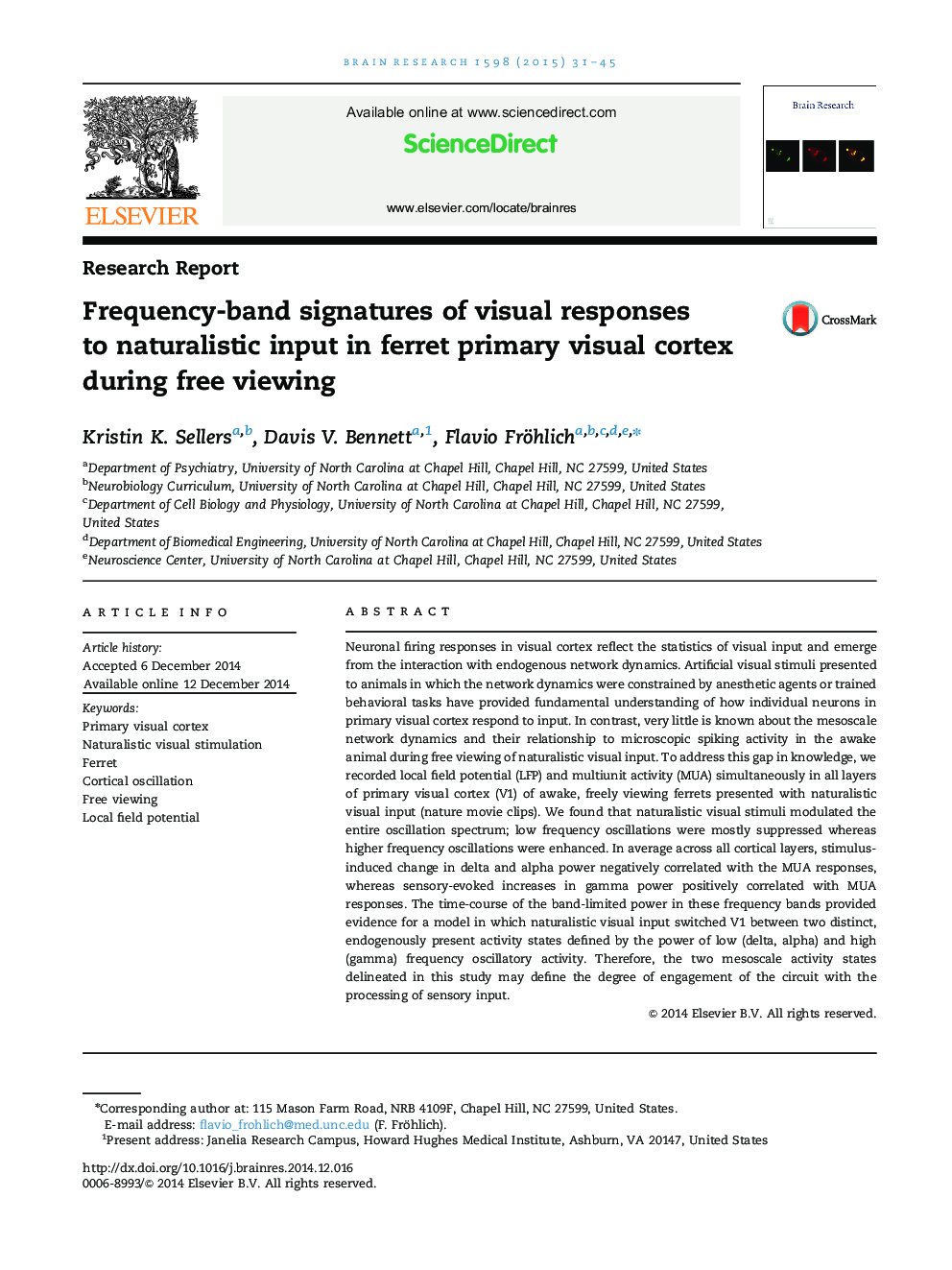| Article ID | Journal | Published Year | Pages | File Type |
|---|---|---|---|---|
| 4323960 | Brain Research | 2015 | 15 Pages |
•Bidirectional modulation of oscillations in awake ferrets by naturalistic stimuli.•Decrease in delta and alpha oscillations correlated with multiunit responses.•Increase in gamma oscillations correlated with multiunit responses.•Naturalistic input switched network dynamics in V1 between two distinct states.
Neuronal firing responses in visual cortex reflect the statistics of visual input and emerge from the interaction with endogenous network dynamics. Artificial visual stimuli presented to animals in which the network dynamics were constrained by anesthetic agents or trained behavioral tasks have provided fundamental understanding of how individual neurons in primary visual cortex respond to input. In contrast, very little is known about the mesoscale network dynamics and their relationship to microscopic spiking activity in the awake animal during free viewing of naturalistic visual input. To address this gap in knowledge, we recorded local field potential (LFP) and multiunit activity (MUA) simultaneously in all layers of primary visual cortex (V1) of awake, freely viewing ferrets presented with naturalistic visual input (nature movie clips). We found that naturalistic visual stimuli modulated the entire oscillation spectrum; low frequency oscillations were mostly suppressed whereas higher frequency oscillations were enhanced. In average across all cortical layers, stimulus-induced change in delta and alpha power negatively correlated with the MUA responses, whereas sensory-evoked increases in gamma power positively correlated with MUA responses. The time-course of the band-limited power in these frequency bands provided evidence for a model in which naturalistic visual input switched V1 between two distinct, endogenously present activity states defined by the power of low (delta, alpha) and high (gamma) frequency oscillatory activity. Therefore, the two mesoscale activity states delineated in this study may define the degree of engagement of the circuit with the processing of sensory input.
